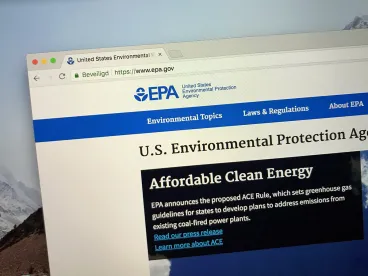The U.S. Environmental Protection Agency (EPA) announced on January 5, 2023, the release of a new interactive web page on the “PFAS Analytic Tools” that provides information about per- and polyfluoroalkyl substances (PFAS) across the country. EPA states that this information will help the public, researchers, and other stakeholders better understand potential PFAS sources in their communities. According to EPA, the PFAS Analytic Tools draw from multiple national databases and reports to consolidate information on one web page. The PFAS Analytic Tools include information on Clean Water Act PFAS discharges from permitted sources; reported spills containing PFAS constituents; facilities historically manufacturing or importing PFAS; federally owned locations where PFAS are being investigated; transfers of PFAS-containing waste; PFAS detection in natural resources, such as fish or surface water; and drinking water testing results.
EPA notes that because the regulatory framework for PFAS is emerging, “data users should pay close attention to the caveats found within the site so that the completeness of the data sets is fully understood.” EPA states that rather than wait for complete national data to be available, it is publishing what is currently available while information continues to be filled in. Users should be aware that some of the data sets are complete at the national level, whereas others are not. For example, according to EPA, it included a national inventory for drinking water testing at larger public water utilities that was provided between 2013 and 2016. To include more recent data, EPA also compiled other drinking water data sets that are available online in select states. For the subset of states and tribes publishing PFAS testing results in drinking water, the percentage of public water supplies tested varied significantly from state to state. EPA cautions that because of the differences in testing and reporting across the country, the data should not be used for comparisons across cities, counties, or states.
EPA states that to improve the availability of the data in the future, it has published its fifth Safe Drinking Water Act Unregulated Contaminant Monitoring Rule to expand on the initial drinking water data reporting that was conducted from 2013 to 2016. According to EPA, this expansion will bring the number of drinking water PFAS samples collected by regulatory agencies into the millions. EPA notes that it also significantly expanded the Toxics Release Inventory (TRI) reporting requirements in recent years to over 175 PFAS and that more information should be received in 2023. EPA’s proposal to designate perfluorooctanoic acid (PFOA) and perfluorooctanesulfonic acid (PFOS) as hazardous substances would also improve data on spill or release incidents reported to the Emergency Response Notification System. EPA will incorporate these reporting enhancements into future versions of the interactive web page.
EPA will hold a webinar to demonstrate the tools on Tuesday, January 10, 2023, at 1:00 p.m. (EST). Registration is open.




 />i
/>i

